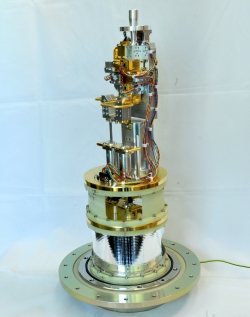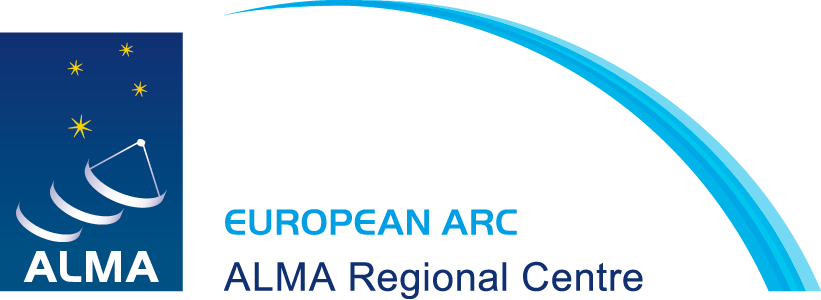On 18 June 2025, the 33rd Band 2 receiver left the premises of the Netherlands Research School for Astronomy (NOVA) and is now on its way to the ALMA Operations Support Facility in Chile. This marks an important milestone since half of the receivers needed to equip 66 ALMA antennas have now been provided. Representatives from the three European Band 2 consortium partners and ESO could witness this event.
ALMA Band 2 receiver production reaches halfway mark

The new Band 2 receivers will allow ALMA to observe over an exceptionally wide frequency range — with wavelengths between 2.6 to 4.5 millimetres (67-116 GHz) — covering the full atmospheric window, originally split between Band 2 and Band 3, with a single receiver. This new receiver is fully compatible with the ALMA Wideband Sensitivity Upgrade requirements, enabling an instantaneous bandwidth over 4 times larger than what most current ALMA receivers can achieve, dramatically increasing its observation speed.
By opening a new window from 67-84 GHz, ALMA Band 2 will allow important measurements of the cold interstellar medium, the mixture of dust and molecular gas that exists in the space between stars and fuels star formation. As well as this, ALMA will be able to study the properties of dust and molecules in objects from planet-forming discs to far-away galaxies at a level of detail never achieved before.
Closer to home, the new receivers will enable observations of complex organic molecules in nearby galaxies, providing clues on how the conditions for life to begin are created. At the same time, Band 2 will be important for helping astronomers better understand how planets form by probing the carbon monoxide “snow line”, a region in planet-forming discs far away enough from the central stars for gas to condense.
The development of Band 2 was led by ESO and included partners at the National Astronomical Observatory of Japan (NAOJ), the University of Chile, several European institutes and industry. The production of the receiver cartridges is subsequently carried out by a consortium comprising NOVA, the Advanced Receiver Development (ARD) group at Onsala Space Observatory, Chalmers University, Sweden, and the Italian National Institute for Astrophysics (INAF).
Now, the Band 2 team will continue to work towards the completion of the remaining receivers to equip all 66 ALMA antennas and offer this new band to the community in Cycle 13, starting from 1 October 2026.
Contributed by Pavel Yagoubov


